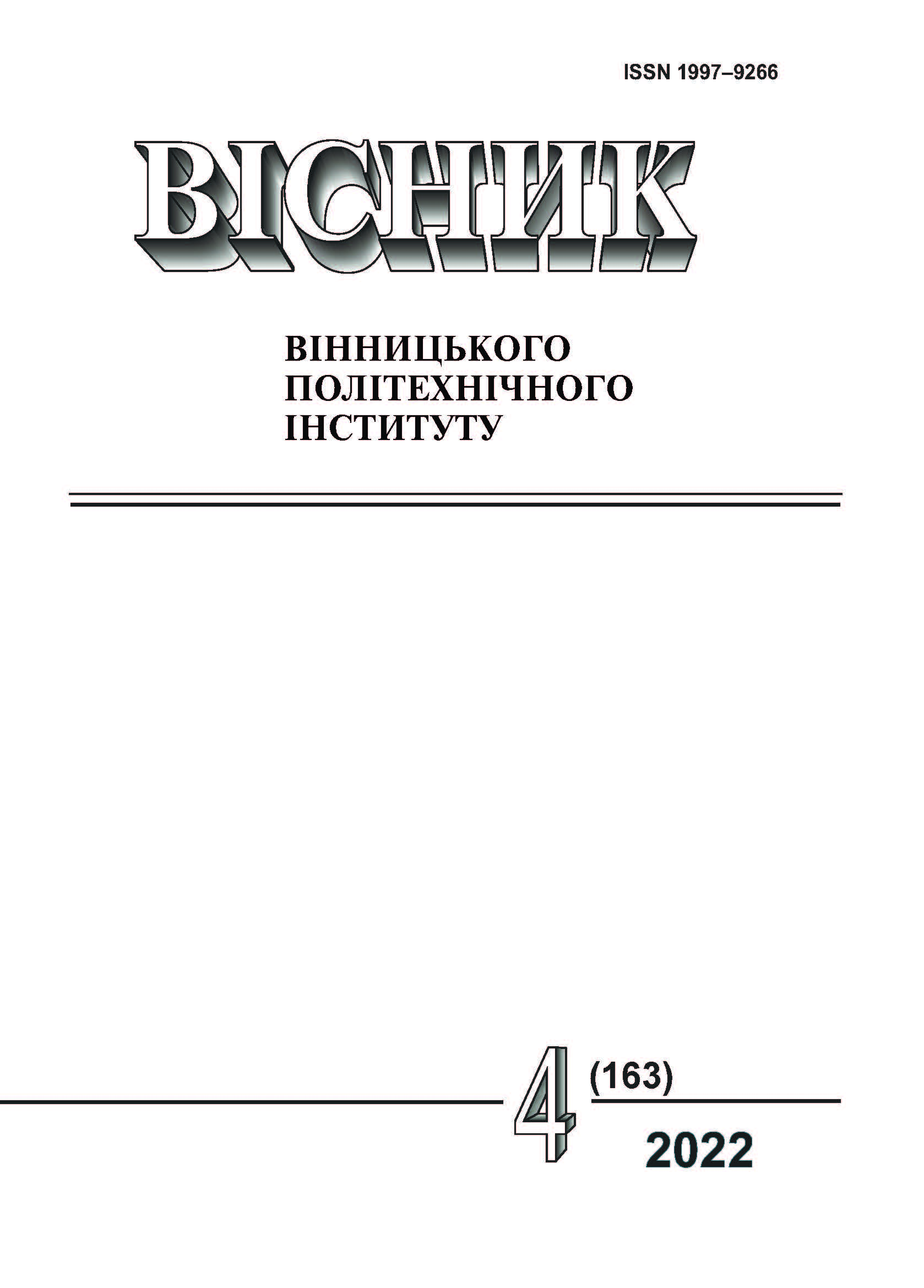A Fuzzy Mathematical Model for Taking into Account the Factors Affecting the Aging Process of the Dry Power Transformer Insulation
DOI:
https://doi.org/10.31649/1997-9266-2022-163-4-27-33Keywords:
influence, prediction, power dry transformer, winding, overload, neural networkAbstract
Disconnection of power transformers leads to large economic losses and negatively affects the operation of the electrical network. One of the most important parameters affecting the duration of operation of a power dry transformer is the permissible duration of overheating of the insulation of the windings, which is determined by the value of the most heated point of the insulation of the transformer windings. A review of the literature was conducted to identify approaches for determining the temperature of windings by indirect methods.
Based on the analysis, the paper proposes a method of forecasting and determining the degree of overheating of the windings of a dry-type power transformer based on its passport data using fuzzy logic, which allows assessing the condition and duration of permissible operation in individual modes. For this, the Matlab software environment and a fuzzy toolbar were used. According to fuzzy rules, taking into account a number of factors that affect the degree of overheating of a dry-type transformer, a fuzzy mathematical model has been developed, which allows to obtain predicted degrees of overheating of the winding according to the operating modes of the dry-type transformer. When constructing a mathematical model, the temperature of the cooling air, the humidity of the environment, the level of overload and the value of the load of the transformer, which occurred immediately before the moment of overload, were taken into account.
A neural network in the form of a multilayer perceptron was used to adjust the developed fuzzy mathematical model. As input data in such a neural network, in addition to those mentioned above, the parameters of the membership function terms and the known values of the allowable durations of the overload of the dry transformer in the corresponding modes of its operation were used.
As a result of the calculations, the terms of the property functions changed slightly, as a result of which, when applying the obtained model, the error in the operation of the fuzzy model significantly decreased and did not exceed 5 %.
The proposed approach turned out to be effective, as it allows predicting the duration of operation of a dry transformer in an extended range of cooling air temperature at the pace of the technological process.
References
ТОВ «Укрелектроапарат», Сухі трансформатори. Хмельницький: НБУВ, 2022. [Електронний ресурс]. Режим доступу: https://uea.com.ua/product-category/dry-transformer/ . Дата звернення 01.08.2022.
Переваги сухих трансформаторів. [Електронний ресурс]. Режим доступу: https://eltiz.ua/uk/blog/perevagi-suhih-transformatoriv/ . Дата звернення 01.08.2022.
H. Mehdipour Picha, R. Bo, H. Chen, M. M. Rana, J. Huang, and F. Hu, “Transformer Fault Diagnosis Using Deep Neural Network,” 2019 IEEE Innovative Smart Grid Technologies - Asia (ISGT Asia). doi:10.1109/isgt-asia.2019.8881052 .
ОАО «Укрэлектроаппарат», Технический каталог. Трансформаторы, 2007, 82 с.
ГКД 34.20.507-2003 Технічна експлуатація електричних станцій і мереж. Правила (у редакції наказу від 21.06.2019 № 271).
Правила технічної експлуатації електроустановок споживачів. [Електронний ресурс]. Режим доступу: http://online.budstandart.com/ua/catalog/doc-page.html?id_doc=29329 .
Л. А. Заде, Понятие лингвистической переменной и ее применение к принятию приближенных решений. М.: Мир, 1976, 167 с.
А. П. Ротштейн, Интеллектуальные технологии идентификации: нечеткие множества, генетические алгоритмы, нейронные сети. Вінниця: УНІВЕРСУМ–Вінниця, 1999, 320 с.
Д. Рутковська, М. Піліньскій, Л. Рутковський, Нейронні мережі, генетичні алгоритми та нечіткі системи, пер. з пол. І. Д. Рудинского. 2-е вид., 2013, 384 с.
Ю. А. Зак, Принятие решений в условиях нечетких и размытых данных. Fuzzy-технологии. М.: Книжный дом ЛИБРОКОМ, 2016, 352 с.
Downloads
-
PDF (Українська)
Downloads: 59
Published
How to Cite
Issue
Section
License

This work is licensed under a Creative Commons Attribution 4.0 International License.
Authors who publish with this journal agree to the following terms:
- Authors retain copyright and grant the journal right of first publication.
- Authors are able to enter into separate, additional contractual arrangements for the non-exclusive distribution of the journal's published version of the work (e.g., post it to an institutional repository or publish it in a book), with an acknowledgment of its initial publication in this journal.
- Authors are permitted and encouraged to post their work online (e.g., in institutional repositories or on their website) prior to and during the submission process, as it can lead to productive exchanges, as well as earlier and greater citation of published work (See The Effect of Open Access).





